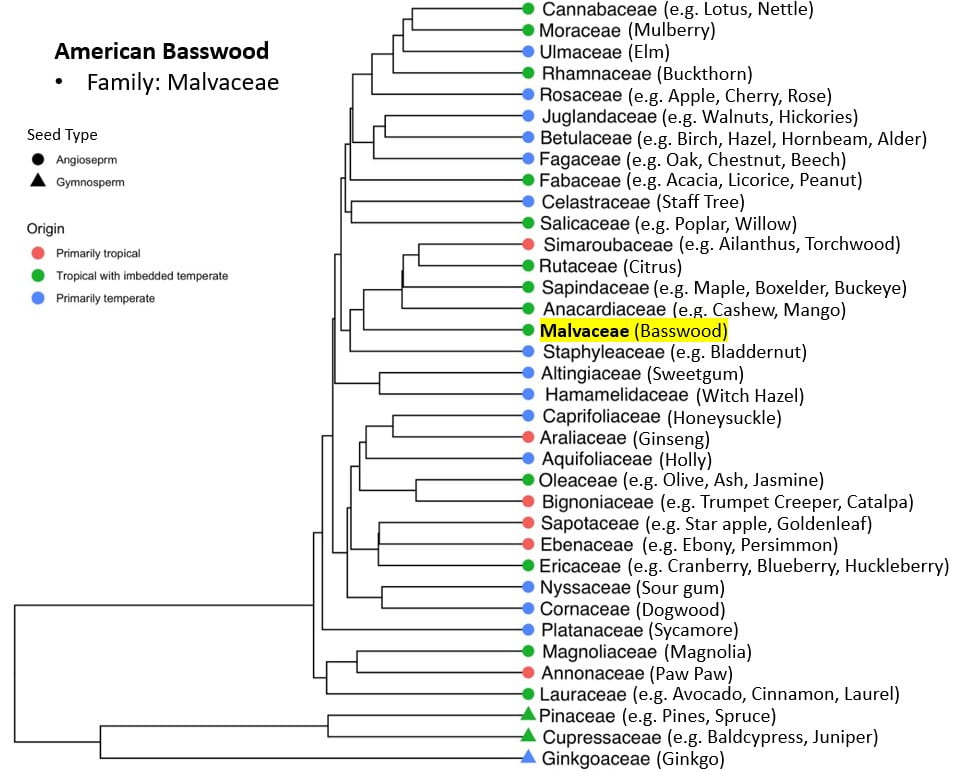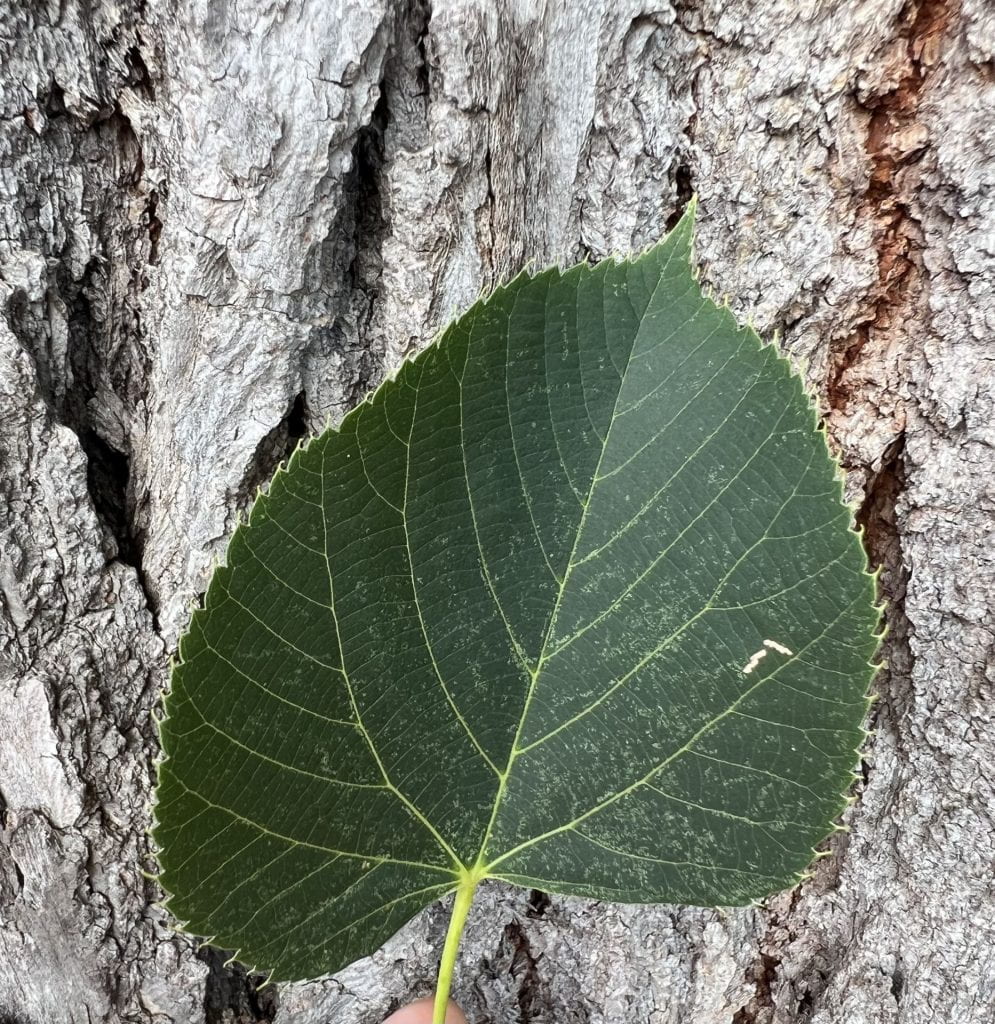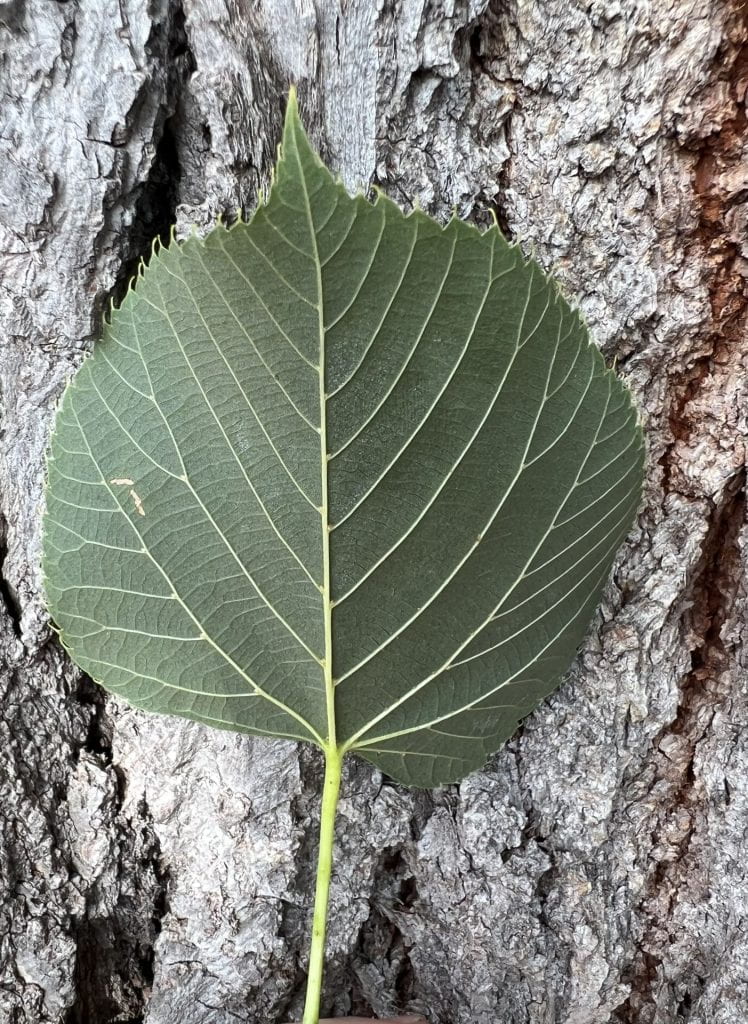American Basswood (removed July 2023)
Arbor Walk #17, Treekeeper ID #1937
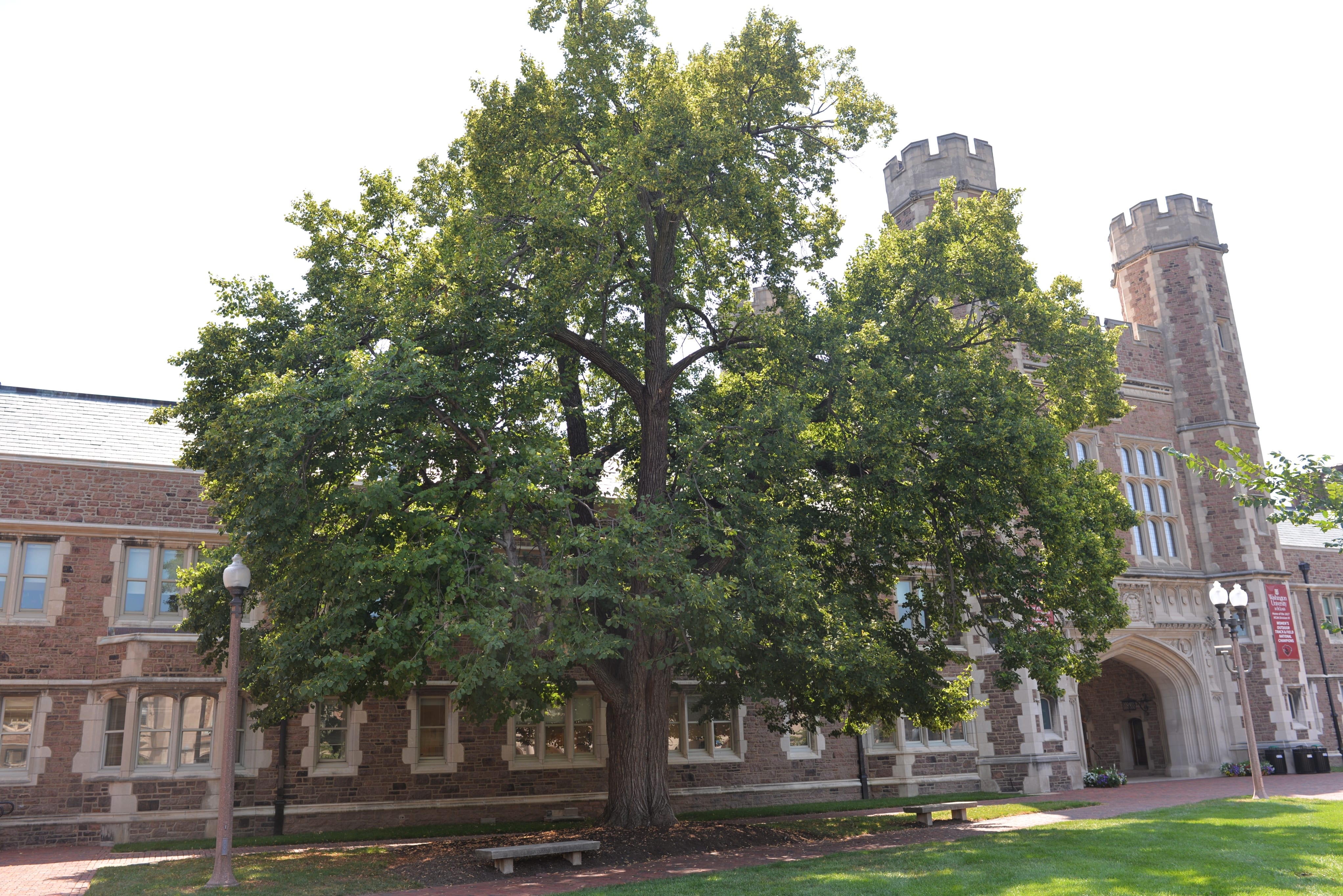
This was one of the oldest and largest trees on campus. It had large green leaves and small, sweetly scented flowers. Recently, efforts have been taken to preserve and continue on the genetic lineage of this tree whose history follows that of WashU’s Danforth Campus. The original tree came down in a storm in July 2023, but scion wood had been grafted in 2020 and clones now grow in all four corners of Brookings Quad, including the new accession to the arboretum, tree 153.
The American Basswood can grow up to 90 feet tall, and it is sometimes referred to as the bee tree due to its plentiful bee population when flowering. Due to its larger leaves and attractive bark, this tree is generally used for ornamental purposes; however, because of its softer, thinner bark, its wood is also commonly used for carvings, furniture and musical instruments. Unfortunately, this also means that the wood is more sensitive to fire damage, as well as more susceptible to rotting.
Removed July 2023
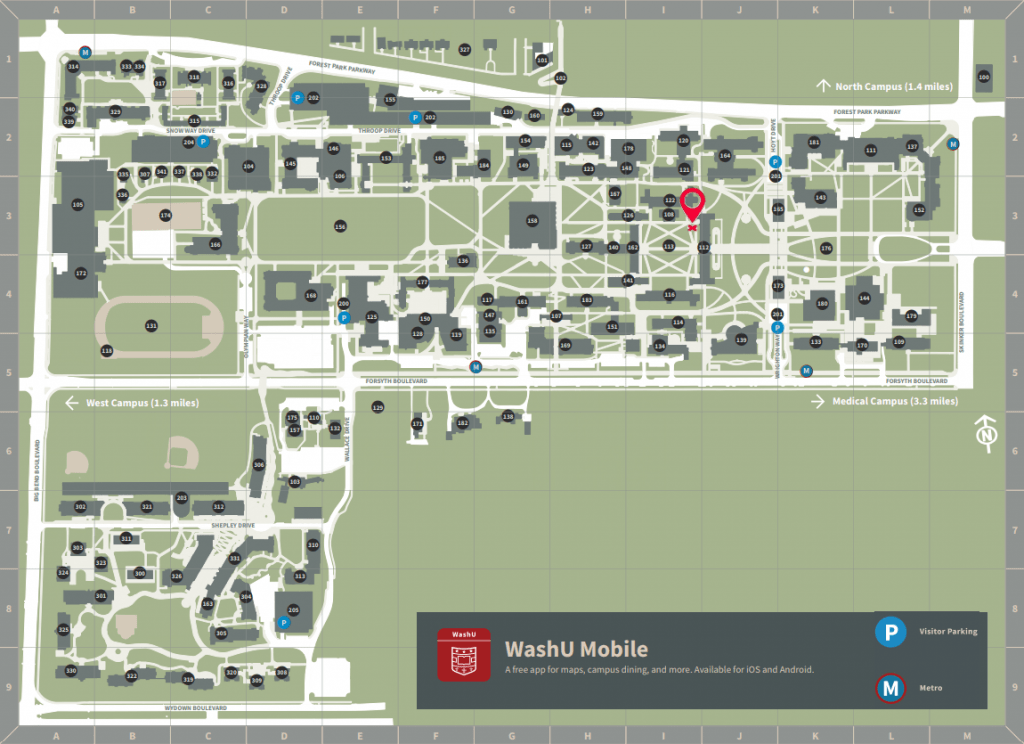
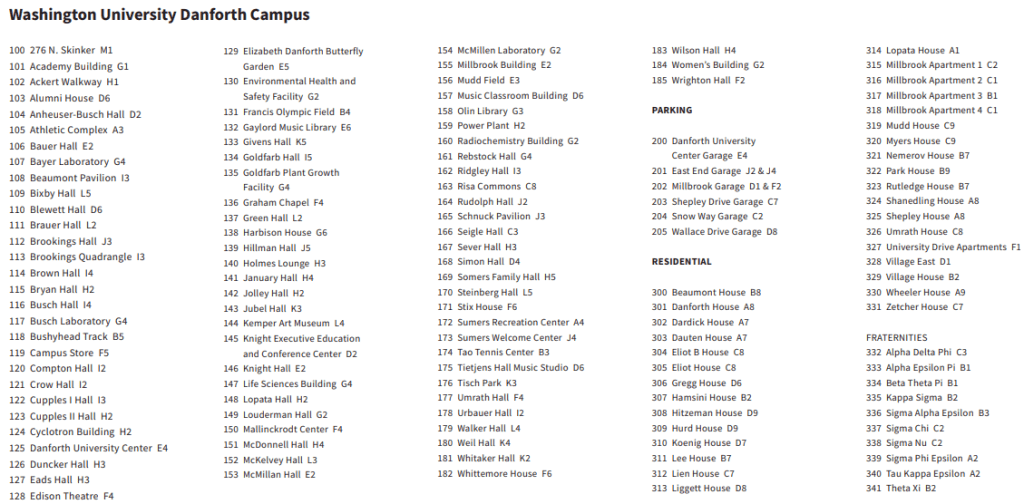
GPS Coordinates
N/A
Percent Concrete
N/A
Distance to Buildings
| Year | Close Building #1 | Close Building #2 | Close Building #3 |
|---|---|---|---|
| 2020-2022 | Brookings Hall, 9.32 m | Cupples I, 30.75 m | Ridgely Hall, 75.03 m |
Distance to Other Species
| Year | Close Species #1 | Close Species # 2 | Close Species # 3 |
|---|---|---|---|
| 2020-2022 | American Elm, 13.69 m | American Elm, 50.23 m | American Elm, 52.18 m |
Standard Measurements
| Year | Height (m) | DBH (cm) | Crown Diameter N-S (m) | Crown Diameter E-W (m) | Average Crown Diameter (m) |
|---|---|---|---|---|---|
| 2020 | 21.1086 | 127.1 | 20.07 | 16.56 | 18.33 |
| 2023 | 23.7 | 132.5 | 18.4 | 15.3 | 16.85 |
Nests and Pests
| Year | Description |
|---|---|
| 2020 | Cankers, some with reddish fungal growth Holes high up on trunk may be nests for animals Squirrel nest Algae and speckled green lichen on the trunk Dark, ‘weeping’ gashes and a boring hole |
Leaf Identification
The leaves of the American Basswood have a distinctive asymmetrical heart (cordate) shape with uneven bases and tapering abruptly into a pointed tip. The margin of the leaf is serrated. The underside of the leaf is pale green with noticeably raised pinnate veins and tufts of tiny hairs at the vein intersections (axils). Leaves are alternately arranged and reach 4″ to 8″ long.
Twig and Bud Identification
The twigs of the American Basswood are slender, somewhat zigzag, and green to red in color with some lenticils. This tree has distinct buds that are often described as being “humpback” since one side typically bulges disproportionately. Furthermore, the buds typically have 2-3 bud scales that are a reddish color and have a false terminal bud.
Bark Identification
On younger American Basswoods, the bark is smooth and green to gray; however, as the tree matures, it develops long, narrow ridges and furrows that are dark grey in color.
Fruit Identification
The fruit of the American Basswood appear in distinct clusters of small, rounded nutlets on a stalk that hang from narrow, elliptical, winged bracts. The purpose of the bracts is to help increase dispersion by acting as a sail. The fruit typically ripens in late fall and will sometimes remain on the tree until early winter.
[photo forthcoming]
Flower Identification
The flowers of the American Basswood are pale yellow and hang in hairless long-stalked clusters. The flowers typically have 5 petals and are well-known for their fragrance. Furthermore, the flowers usually appear in May or June and are monoecious.
[photo forthcoming]
